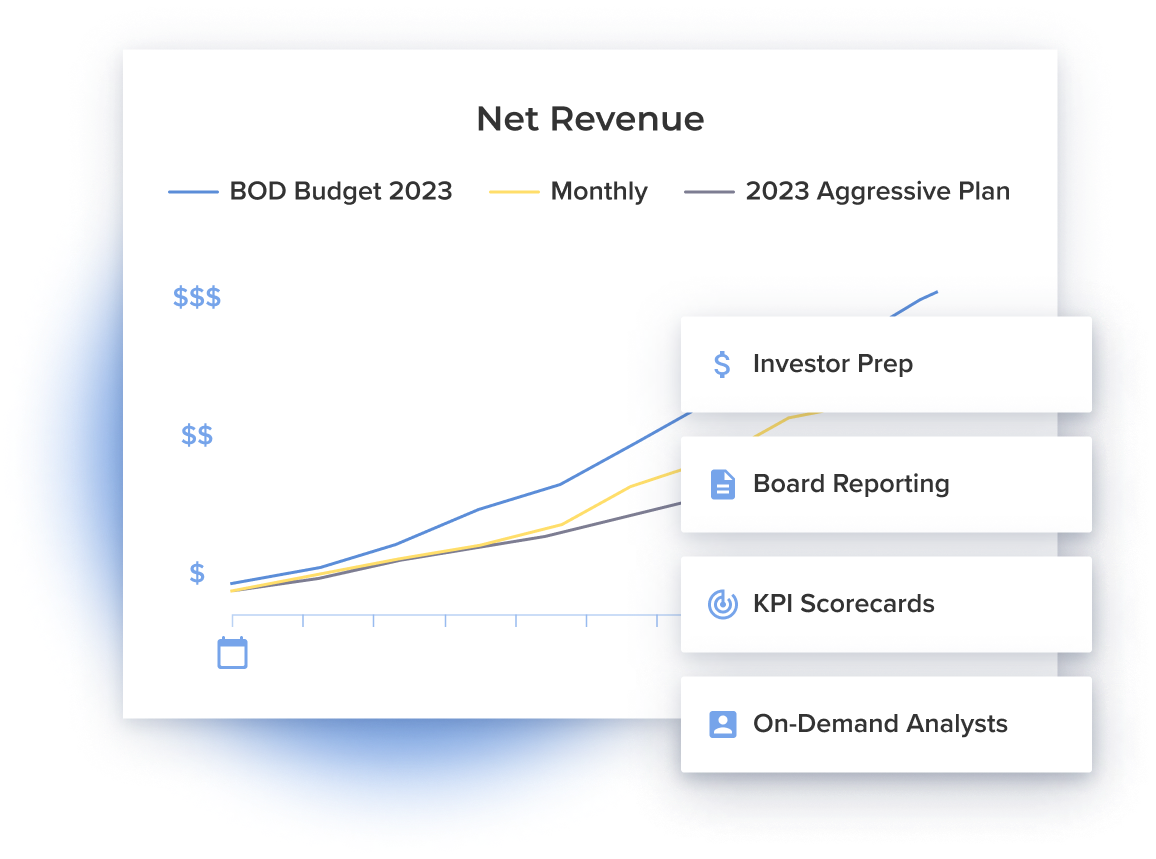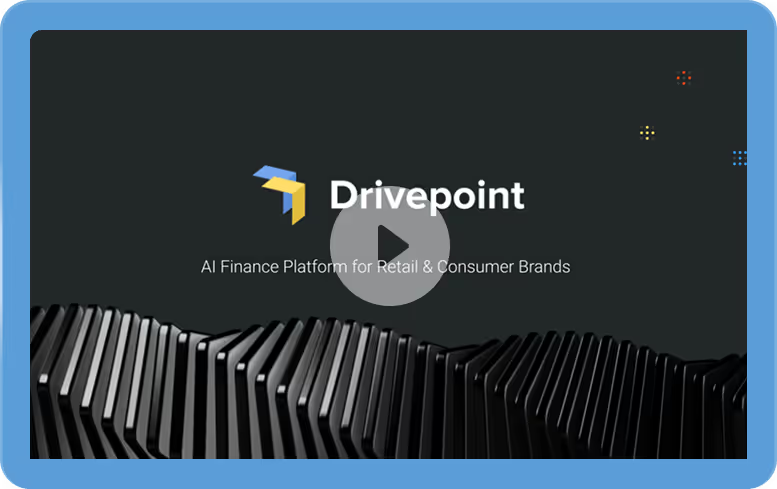
Every pre-scale brand dreams of a future free from the relentless grind of margin and profitability calculations. But, in 2024, these concerns won’t resolve with scale alone, no matter how fast you’re growing. Unlocking a more lucrative financial position requires ongoing discipline — and a single-minded commitment to profitability as a goal in and of itself.
Simply put, you can’t grow sustainably unless you’re profitable early. And, while early profitability might seem like a tall task, a strategic finance platform that helps model financial outcomes and accounts for every factor affecting your bottom line can help you make the decisions that streamline this journey.
Why driving profitable growth goes beyond scaling your company
Young companies once thought they’d magically become profitable as soon as they hit $100M in revenue, but recent shifts in economic conditions and investor expectations have put this fantasy to rest. Attaining and maintaining profitability now necessitates a surgical approach to every line of your P&L.
As you review your P&L, you’ll notice a pattern: Most finance functions can’t be remedied by growth alone, but there are a few that can benefit from it. You can’t, for example, expect increased brand awareness to drive down your ad spend — you’re realistically going to want to keep investing in audience discovery as you grow. But you can, on the other hand, harness that increased brand awareness to offer fewer discounts since customers will start ascribing more value to your brand.
The high-growth companies that have achieved profitability know how to plan around the functions that don’t benefit from growth and leverage the ones that do.
To help SMBs successfully navigate these functions, we segmented our DTC customers by size and looked at how different finance functions track across the P&Ls of small (<$10M), medium ($10M-$30M), and large (>$30M) companies.
The strategic finance functions of all eCommerce brands
As we examined the P&Ls of small, medium, and large companies, we uncovered four finance functions that are stubbornly impervious to scale. While these functions won't improve with scale, you can still use Financial Planning and Analysis (FP&A) to account for their impact as you progress through your growth journey.
Keeping track of COGS fluctuations
Despite the widespread perception that COGS will improve with scale, the reality is that most of your primary cost determinants are already baked into your company’s core offerings at inception. As such, unless you make significant changes to your product, these costs are usually inflexible. Plus, most companies will have already taken the “easy” opportunities to reduce COGS (such as automation or substituting low-cost materials) during their first few years of operation. You might, however, be able to cut down on your COGS if you land on a more effective way to ship your product or strive for a simpler unboxing experience.
We’ve also seen our brand partners improve their COGS through increased buying power with suppliers. That said, this isn't always a feasible path forward, and the benefits of this approach are often realized in improved payment terms rather than price reductions. Even if larger orders aren't a concern for your brand's balance sheet, your supplier network might fumble the bag when trying to fill these orders. In some cases, you may need to loop in multiple suppliers to meet demand, but few (if any) of them are likely to provide a group discount.
As a preemptive measure, we recommend talking to your supplier network about what your relationship would look like if you ended up scaling significantly.
Cost inflexibility, in turn, trickles down to your gross profit, which likely won’t change over time either. However, we have noticed that the spread tends to narrow with scale.
Even if you’re unlikely to significantly improve your COGS as you grow, you’ll still need a way to understand and manage its continued impact on your bottom line. FP&A tools like Drivepoint give you the visibility you need to account for every new cost.
Managing fulfillment and merchant fees
Similar to COGS, your fulfillment and merchant fees are largely predetermined by the physical dimensions of your product. Fortunately, the days of pre-scale companies spending outlandish fees on low-volume orders are over. In today's well-developed DTC ecosystem, brands of all sizes have reliable access to basic cost-of-doing-business services.
This improved DTC infrastructure means you're less likely to save on fulfillment and merchant fees down the line. However, there is one notable exception to this rule: You can increase your order size and sell your SKUs in bundles. Bundling improves profit margins by reducing your warehouse and fulfillment costs while simultaneously coaxing your customers into making higher-AOV orders.
To decide if bundling is right for you, consult your FP&A function. It will inform you whether you have the demand to support pricier orders and help you model the downstream effects of potentially lower fulfillment costs.
Embracing ad spend as you grow
Pre-scale companies often assume that growth’s inevitable boost to brand awareness will drive enough organic sales to reduce advertising costs. While it’s true that you’re likely to see an uptick in organic sales, you’ll also find that your ad spend will rise in proportion to your growth efforts.
For example, bigger brands must enter into more expensive auction tiers when advertising on social media platforms. Additionally, their growth necessitates reinvesting in new audience discovery resources on a regular basis. After all, having an established customer base isn’t going to stop you from trying to appeal to new segments.
So accept that you’ll always be beholden to paid advertising, and make plenty of space for it in your growth plans. And, if you’re worried about inefficient ad spend, your FP&A function is always there to calculate its ROI and help you adjust accordingly.
Accounting for refunds
Refunds generally account for the same percentage of gross sales at every growth stage. While larger companies have more resources to invest in processing systems and other tools that simplify refunds, these benefits only offset the fact that they’re now fielding far more returns.
Why do returns scale alongside growth? Early adopters tend to be more forgiving of the scrappy brands they’re willing to gamble on, but as your customer base broadens, so will the number of unsatisfied shoppers expecting refunds.
To keep your refunds manageable, invest in the right tools when you can afford them and plan around their continued effect on your financials.
The strategic finance functions that benefit from growth
While growth generally did not reward the finance functions we discussed above, it tends to look more favorably on the three we turn to now. Let’s look at why that is and how FP&A can help you squeeze more value from the functions that benefit from scale.
Monitoring and optimizing discounts
As companies accrue capital and increase their net profit margins, they’re able to scale back their deployment of discounts.
This is because, unlike smaller companies that discount to meet urgent cash needs, larger companies generally have enough liquidity to prioritize brand equity.
While it goes without saying that larger companies should lean into this advantage as much as possible, we also recommend that smaller companies approach discounts with a bit more caution. Offering too many discounts upfront can dilute your brand’s perceived value, even in the eyes of your most loyal customers, and condition them to expect lower prices all the time. We still see larger companies grappling with the hangover effects of too many early discounts.
To avoid excessive discounting during a liquidity crisis, look for other ways to hold cash. We recognize this may not be an option if you’re bootstrapped, but if you’re venture-backed, you should definitely consider relying less on discounts and more on your funding sources to keep cash in the bank.
At Drivepoint, we’re happy to help keep your discounting strategy in check. We can build you bespoke forecasts that account for the impact of every discount and show you where you need to draw the line.
Leveraging your shrinking general and administrative costs
G&A costs tend to shrink with scale, just as you might expect. As you grow, you’re able to spread the same fixed costs across a much larger revenue base. However, it’s important to note that tangible savings generally don’t set in until your company’s revenue has reached the tens of millions.
We noticed a much greater disparity in G&A costs between medium and large companies than small and medium companies. This lag reflects the fact that mid-range companies often need to invest in capabilities that they could scrape by without when they were smaller. You may, for example, need to invest in renting and outfitting a bigger office or onboarding an HR team to support your new company structure.
Make sure that your long-term financial plan is resilient enough to continue accommodating these costs in the meantime.
Ensuring your EBITDA grows with you
While you can't scale your way into profitability, high-growth brands do benefit from much tighter spreads in EBITDA and net income.
For our customers, this improvement has largely been a consequence of the functions we discussed in the previous section. Smarter discounting strategies and lower G&A costs are, in other words, key variables to account for if you want to keep EBITDA up.
However, we also want to emphasize that these changes come down to much more than a few manipulations. Behind every successful scale is a carefully trodden path to profitability.
To forge your own path, you’ll need to take a more holistic approach to your FP&A that can account for the impact of every factor affecting your bottom line. Managing the functions you can’t improve is often just as important as fine-tuning the ones you can. And, the more deeply you can dial into your company’s financial health, the more quickly you can improve it and grow.
Drive Profitable Growth with Drivepoint
Growing a company means making constant calculations. Drivepoint offers a low-lift way to get a 360-degree view of your company’s financials and chart the quickest path to profitable growth.

Although you can’t control every outcome, Drivepoint can help you confidently confront the unknown and pull every lever available. Whether you want to drive down your fulfillment costs, optimize your discount strategy, or lower your G&A costs, we help you outline the sharpest plan of attack.
That’s why Drivepoint is the strategic finance platform trusted by scaling consumer brands (including Simple Modern, Graza, Oats Overnight, and more). With our platform, these brands can:
- Access their company’s financial data from every channel in a single place
- Accurately forecast their financials with near-100% accuracy
- Identify surprising financial insights and hidden growth opportunities
- Create shareholder reports that ensure stakeholder alignment
Want to know more about what Drivepoint can do for your FP&A? Schedule a demo today.
Subscribe to our newsletter

Ready to see what you can do with Drivepoint?
Learn how other consumer and CPG brands are driving margin and cashflow with Drivepoint









